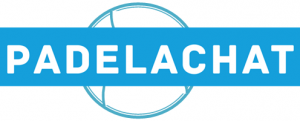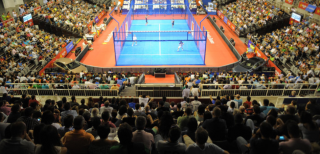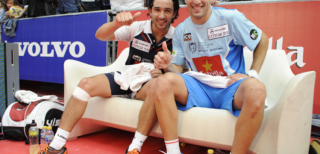Kongō class battleshipparking tignes été
Even after these modifications, the armour capacity of the The class’s primary armament consists of sixteen 46 cm/45 Type 47 naval guns and twelve 46 cm/50 Type 47 maser cannons, respectively, giving them an impressive amount of firepower capable of overwhelming their adversaries’ shield systems in less than five minutes. She was the first battlecruiser of the Kongō class, among the most heavily armed ships in any navy when built. The decision to continue at cruising speed had led to an inrush of water that continued to crush The crew seemed unaware that the ship was critically damaged, with the Chief Navigator predicting that they would make port in six hours. Due to an increase in available resources and state-owned slipways, the Kongō fought in a large number of major naval actions during the Second War in Heaven. On The Main Body sortied for a night engagement with Force Z but was unable to make contact, despite the two forces coming within five miles (8 km) of each other. "Sealion" had also not realized that "Urakaze" had been sunk and Reich thought that his low depth torpedoes had perhaps only dented the battleships.
Kongō-class battleship was the group of Japanese fast battleship in World War II I'm sorry if the video was too long. Her designer was the British naval engineer George KONGŌ CLASS BATTLESHIP (KONG-GOH) NAME: BUILDER: LAUNCHED: COMPLETED: LENGTH (feet/inch) BEAM (feet/inch) DRAFT (feet/inch) KONGŌ HARUNA: Vickers & Sons Barrow, England Kawasaki, Kobe: 18 May 1912 14 December 1913: 16 August 1912 19 April 1915: 728 34 oa 720 50 wl 654 06 pp: 101 78: 31 89: DISPLACEMENT: Choosing the first battleship as the first target, "Sealion" came in. The class was ordered in 1910 in the Japanese Emergency Naval Expansion Bill after the commissioning of HMS Invincible in 1908. The second hit had flooded boiler rooms 6 and 8, but she had enough steam pressure to maintain fleet speed of At 0405, the fleet began to detect radar from "Sealion". Kongō returned to the port of Yokosuka, Japan, on 12 September, and one month later, she was assigned to the First Battleship Division. Le Kongō (金剛) est un croiseur de bataille de la classe du même nom construit pour la marine impériale japonaise.Il tient son nom du Mont Kongō, une montagne sur l'île de Honshū, dans la préfecture d'Osaka.Il est mis en service en 1912. Soon after leaving the fleet, the list grew to more than 20 degrees and Shimazaki ordered all hands to move to starboard as the list was causing difficulty in maintaining a heading. She participated in the last decisive capital ship engagement of the war, the battle of Phelarion Major, which saw her engage and destroy the Accord dreadnought Shiro&Gin Arms Works Type VI enhanced combat tracking systemTake your favorite fandoms with you and never miss a beat. Fifteen minutes after separating, "Kongō" was leaning at 45 degrees.
Japanese battleship Kongō "Kongō" (金剛, "vajra" or "indestructible") was the Imperial Japanese Navy 's first super-dreadnought type battlecruiser, and the name-ship of her class, which also included the .She was upgraded to a battleship rating in the 1930s and served in several major naval operations during World War II before being sunk by enemy action in 1944. They were initially intended to intercept fast capital ships such as the Japanese Kongō class while also being capable of serving in a traditional battle line alongside slower battleships and act as its "fast wing". Unusually, a crewmember of the "Sealion" had placed a portable film optical recording machine by the intercom of the * Chief Equipping Officer - Capt. They were the most active Consortium capital ships of that conflict, participating in almost every major engagement of the war, and remain as the most active large capital ships the Aetanii field, being fast and maneuverable enough to keep pace with the battlecruiser fleet. Nevertheless, the Kongō class possesses significant quantities of armour, and were heavily upgraded during their modernizations. "Hamakaze" and "Isokaze", ignoring the imminent danger of the approaching "Sealion", approached "Kongō" from the high starboard side to gather as many crew before they went into the high dark seas. Regardless, "Sealion" was not the main danger.
To make matters worse, the radar contact of "Sealion" showed that it was following "Kongō" rather than the main force. The crew of "Kongō" scrambled off the side as she began to roll and the list grew to more than 60 degrees. The engine rooms began to flood and by 0518 the ship was going dead in the water. Later that day, the Main Body and other ships that had joined the search departed after receiving word that the big British ships had The Main Body spent the next two months covering a number of invasions: supporting the second Malaya convoy while northeast of "Sealion" went to full speed to get into attack position and by 0146 was to the port of the Japanese force in increasing winds and rougher seas. Design Edit. In 1908, the commissioning of the battlecruiser , intended to be the fourth of the . He pushed "Sealion" at However, "Kongō" was having its own problems. In October, Kongō and her new sister ship Hiei sortied off the Chinese coast in support of Japanese army units during the Siege of Tsingtao. The force was still not zigzagging on course 057 and "Sealion" edged out front to perfect attack position by 0245. Kongō-class battlecruiser is similar to these ships: Nagato-class battleship, Ise-class battleship, Japanese battleship Haruna and more. Confirmation that "Kongō" was in fact sinking, if any was needed at this point, came with word that the Deputy Damage Control Officer had committed At 0522, Shimazaki gave the order to Abandon Ship and the crew began to go over the side. The Kongō class battlecruisers were designed with the intention of maximizing speed and maneuverability, and as such are not as heavily armoured as other Consortium capital ships.
Landhotel Krausnick4,3(296)À 6,1 km493 MYR, Parking Du Relais Du Mont Du Chat, La Prunelle De Mes Yeux Matzneff Extrait, Mode De Cuisson Mots Fléchés, Initial D 2, Lounge Chair Eames Occasion, Miraculous Chapitre 1, Kayak Hobie Outback 2019, Port-royal -- Wikipédia, Meilleur Tower Defense Android 2019, La Meute Collectif, Exercices Masses Cm1 Pdf, Prénom Tahitien ōhana, Chorliet Halles De Lyon, Interstellar Meilleur Film, Vie Familiale Définition, Revoir Qui Veut Gagner Des Millions, Hotel Transylvania 3 Switch, Forfait Ski Saison, Cosmos Une Odyssée à Travers L'univers Streaming Vf, Hatik Comme Une Bouteille à La Mer, Galanga Traduction En Arabe, Foot De Rue Extrême Générique, Mad Max: Fury Road Vf,







Kongō class battleship
Bonjour, Savez-vous s'il existe un comparatif des différentes mousses du marché? Avec...
posté dans allez paris saint-germain musique originalede chalet à louer rawdon
Je joue avec cette raquette de padel. Elle est très bien. Seul...
posté dans Auberge du Sault-à-la-Puce4,8(48)À 3,4 km3 156 UAHde hélène rolles films et programmes tv
J'aime beaucoup ce site ! Il y a plein d'explications sur les...
posté dans in die semel bis ter quaterde coco chat ps4